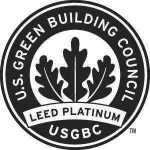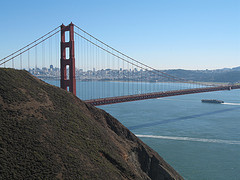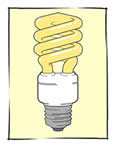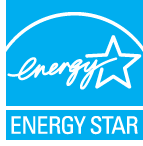 The following are key online resources for information on federal, state, and local environmental tax credits, rebates, and other financial incentives. Most of the incentives that are available are for installing energy-efficient equipment or renewable energy (e.g., solar) technologies.
The following are key online resources for information on federal, state, and local environmental tax credits, rebates, and other financial incentives. Most of the incentives that are available are for installing energy-efficient equipment or renewable energy (e.g., solar) technologies.
FEDERAL
This is a good directory of federal income tax credits and other incentives for energy-efficient products—for consumers, as well as businesses, builders, and manufacturers: Energy Tax Incentives Assistance Project
(For info on federal grants to organizations and agencies, go to Grants.gov.)
STATE AND LOCAL
Check out the Database of State Incentives for Renewables and Efficiency for a compendium of options, organized by state. Also check with your municipality (city and county governments) and local utility companies. Many offer their own green rebates and incentives. And this is a great summary of energy-efficiency grants and funds provided to state and local agencies by the 2009 economic stimulus/recovery bill (ARRA).
CALIFORNIA
For those of you who are in California, there are numerous entities offering green rebates and other incentives. Take a look at these resources:
If you know of other useful directories or resources related to green financial incentives, or if you have made use of energy tax credits or other green incentives, please share your experiences or suggestions by leaving a comment below.
November 16, 2009
I recently added the latest set of Platinum rated projects to my listing of LEED Platinum certified building projects worldwide. The listing is organized by countries and states, and some of the projects are linked to in-depth case studies. As of this month (October 2009), I know of LEED Platinum certified projects in 44 U.S. states plus Puerto Rico, as well as projects in 9 other countries: Australia, Brazil, Canada, Germany, India, Saudi Arabia, South Korea, Sri Lanka, and the United Arab Emirates. There are all types of Platinum projects: commercial, residential, institutional…new construction as well as renovation.
 Platinum is the highest rating in the LEED green building rating systems. Building projects that have attained this rigorous level of certification are among the greenest in the world.
Platinum is the highest rating in the LEED green building rating systems. Building projects that have attained this rigorous level of certification are among the greenest in the world.
I update the listing every month or two. If you know of a project that has officially achieved LEED Platinum certification but is not yet included in the listing, please let me know.
October 21, 2009
If you’ll be in the San Francisco Bay Area during the first week of October, consider attending one or both of these entertaining and edifying events, which will be taking place in San Francisco and in West Marin County respectively:
West Coast Green, San Francisco
Expo + conference on green innovation for the built environment
Fort Mason Center
October 1-3, 2009 (Thursday – Saturday)
www.westcoastgreen.com
3rd Annual Point Reyes Green Homes Tour, Pt. Reyes Station
Organized by the Community Land Trust Association of West Marin (CLAM)
October 4, 2009 (Sunday)
www.clam-ptreyes.org
If you’d like to recommend other green events that will be happening in the Bay Area this fall, feel free to mention them in the Comments section.
September 7, 2009
The following websites have some of the most well-presented and up-to-date, free online collections of case studies (or profile articles with in-depth project information) on green homes and green buildings around the country. They feature new construction as well as renovation projects.
These three sources provide case studies and information on residential projects only (primarily single-family homes):
[Feb. 2011 Update: See a more recent post that provides additional residential links.]
The following sites primarily feature commercial and institutional buildings, though they also include some case studies of residential projects:
- High Performance Buildings Database provided by the U.S. Department of Energy and BuildingGreen. The case studies in this database are very comprehensive; they include information on costs, the team process, and lessons learned, as well as details on the projects’ green strategies and materials. Currently, the database contains case studies on more than 275 buildings, including more than 130 LEED certified projects. Note: In order to get full access to the case studies through the BuildingGreen site, you have to be a member/subscriber (which I believe is well worth the price if you’re actively involved or have a strong interest in green building). If you’re not a subscriber, you can get free access to complete versions of a subset of those case studies (112 of the 275) via the Department of Energy’s database (unfortunately, this site hasn’t been updated for a few years, so it doesn’t include the most recent projects that are posted on BuildingGreen). In addition, you can see complete versions of some of the LEED case studies via the U.S. Green Building Council’s site (select “Projects with Case Studies” on the search form), and case studies on the annual award winners of the AIA COTE (American Institute of Architects’ Committee on the Environment) Top Ten Green Projects via the AIA’s website.
I have written many case studies on green building projects over the years. In addition to the two recent Green Building Advisor case studies mentioned above, I’ve prepared in-depth case studies on the David Brower Center, Berkeley; Alder Creek Middle School, Truckee; Colorado Court affordable housing, Santa Monica; the Linden Street Apartments, Somerville, MA, and other projects. Links to some of my published case studies are posted on MLandman.com.
August 20, 2009
 ENERGY STAR is an energy efficiency rating program developed by the U.S. Department of Energy and the U.S. Environmental Protection Agency. Most people are familiar with ENERGY STAR labeled home appliances and light bulbs, but many people may not be aware that the label is applied to more than 60 different types of products (for residential use as well as commercial building use), including heating and cooling equipment, roofs, and many types of electronics. (Note: Heating and cooling are the largest sources of energy consumption in homes; they account for almost half of a typical home’s energy consumption and energy costs.)
ENERGY STAR is an energy efficiency rating program developed by the U.S. Department of Energy and the U.S. Environmental Protection Agency. Most people are familiar with ENERGY STAR labeled home appliances and light bulbs, but many people may not be aware that the label is applied to more than 60 different types of products (for residential use as well as commercial building use), including heating and cooling equipment, roofs, and many types of electronics. (Note: Heating and cooling are the largest sources of energy consumption in homes; they account for almost half of a typical home’s energy consumption and energy costs.)
 Specific examples of products for which you can find ENERGY STAR qualified models include: air conditioners (central or room), ceiling fans, exhaust/ventilation fans, furnaces, boilers, thermostats, water heaters, refrigerators and freezers, dishwashers, clothes washers, insulation, windows, skylights, roofs, doors, light fixtures and bulbs, as well as TVs, DVD players, phones, computers, monitors, printers, copiers, etc.
Specific examples of products for which you can find ENERGY STAR qualified models include: air conditioners (central or room), ceiling fans, exhaust/ventilation fans, furnaces, boilers, thermostats, water heaters, refrigerators and freezers, dishwashers, clothes washers, insulation, windows, skylights, roofs, doors, light fixtures and bulbs, as well as TVs, DVD players, phones, computers, monitors, printers, copiers, etc.
To find out which brands and models of a particular product have earned the ENERGY STAR label, or to compare the levels of efficiency among different models, go to the ENERGY STAR Qualified Products website. Also, check with your utility company to see if they offer rebates for purchasing energy efficient equipment or appliances; many utilities do.
[CLICK HERE to CONTINUE]
March 28, 2009
 The following are key online resources for information on federal, state, and local environmental tax credits, rebates, and other financial incentives. Most of the incentives that are available are for installing energy-efficient equipment or renewable energy (e.g., solar) technologies.
The following are key online resources for information on federal, state, and local environmental tax credits, rebates, and other financial incentives. Most of the incentives that are available are for installing energy-efficient equipment or renewable energy (e.g., solar) technologies.




